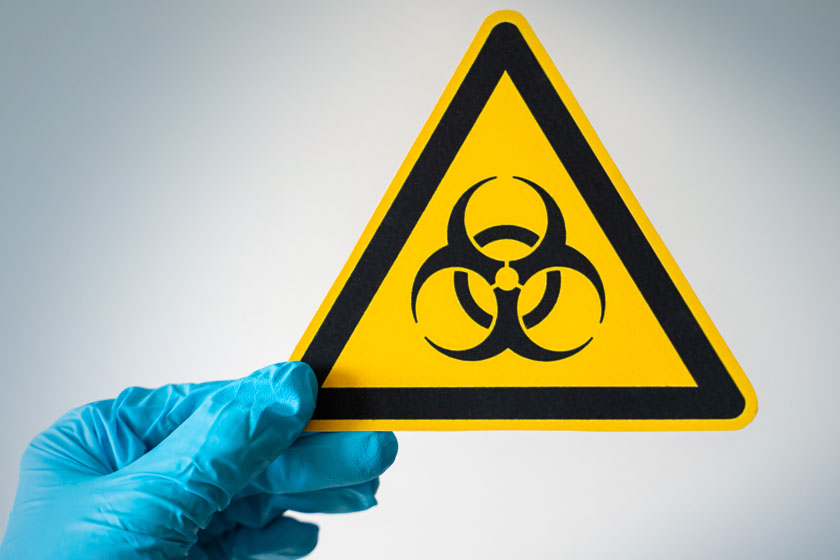This January is the 12th anniversary since the effective date of California’s Toxic Mold Protection Act (SB 732), which was signed into law with much fanfare by Gray Davis during his ill-fated tenure as Governor. The Act was supposed to set standards for airborne mold exposure, regulate the mold industry (who can do inspections, lab work, and remediation; insurance requirements for these folks; and look at things such as whether or not an inspector can also be a remediator), set disclosure requirements for landlords who know that they have a mold that’s a health hazard (or tenants inform their landlords of the same), and tighten up disclosure requirements for mold and moisture damage problems during real property transfers. Sounds good, right?
However, soon after the law hit the books, trouble started. The new “Govenator,” Arnold Schwarzenegger, put a moratorium on ANY new California regulations for one year. After that, the California Department of Public Health (CDPH), has not received funding for the project of creating the new regulations. In 2008, the CDPH was literally asking for donations to fund writing the regulations (estimated cost of over $1 million). They didn’t receive much (do you think the mold industry wants to be regulated?). The CDPH’s web page on the status of the Act’s implementation hasn’t even been updated since 2008!
An important thing to note here is the difference in our state between “laws” and “regulations.” Laws enact the broad concepts, and regulations are carried out by agencies (like CDPH, Cal-EPA, and Cal-OSHA, to name a few dear to my heart). So in order for anything to really happen and get enforced, regulations need to be written to carry out the law.
So where does this leave us?
The only thing that has become effective as a result of the Act is real estate disclosure. Since the Act passed, all property sellers must disclose any current or past mold problems or moisture damage. This is certainly a good thing for property buyers, and helps protect Realtors as well. On the other hand, the “mold industry” remains totally unregulated in California. This means that literally anyone can call themselves a “mold inspector,” anyone can do mold lab analysis, anyone can do mold remediation, and there is no prohibition from people doing inspections also doing remediation. This has led to a proliferation of inspectors and remediators who for the most part don’t do great work and unfortunately at times downright dishonest. Lots of people are familiar with this experience, have heard horror stories, or have seen expose’s of bad “mold professionals” on TV.
Every week, someone calls me needing help to straighten out a mess caused by a “mold professional.” Last week, I had four such calls. To make matters worse, referrals from friends, fellow professionals (Realtors or property managers) and reviews from the web are not always reliable either. I’ve seen former salesmen (cell phones and office supplies), plumbers, printers, pest control guys, even realtors – who got their Certified Mold Inspector certificate (requires just a three day class!) and are now calling themselves “mold experts.”
So what is the public to do?
Here are some general recommendations for trying to find a great mold inspector:
- Cheap isn’t always better. Would you want the cheapest surgeon to operate on you? Heck no! For instance, even though I’m not the least expensive inspector, often my inspections end up saving people money because I limit the demolition to only what’s needed. For instance, recently an inspector wanted to rip out an entire bathroom, ceilings, and walls in areas where mold had not even been found yet…and turned out not to be there.
- NEVER use a mold inspector who also does mold remediation. While not illegal (there’s no regulations, remember?) it often leads to either a poor quality inspection, or worse, getting ripped off with unneeded or overzealous remediation. You don’t want to leave the fox watching the henhouse!
- ABIH Certified Industrial Hygienists (CIH) have the highest level of expertise in the health and safety field. These are the best folks to do your mold inspection. It’s a difficult certification to obtain and keep, and is highly respected. However, keep in mind that not all CIHs are familiar with mold issues. Make sure the one you choose is indeed well-experienced with mold issues and has good references.
- Other certifications – such as Certified Mold Inspector, Certified Indoor Environmentalist, and Certified Microbial Consultant – are often obtained simply by attending a few days’ classes, and have no degree requirement. These folks aren’t all bad – but an awful lot are! Often they cannot testify in court if needed. Be aware of these people’s experience and reputation.
- Go ahead and check references, including the BBB, Yelp, and other referral sources. If these are negative, it’s a sign of problems. Look for someone with a great reputation.
- Make sure the inspector carries both general liability and professional liability. If the firm has multiple inspectors, also check that they have Worker’s Compensation too.
- Finally, be careful of someone who either emphasizes sampling over a physical investigation, and/or has relatively high sample fees, say over $125 per sample. These people have huge mark-ups (300% or more!) on their samples and tend to oversample. Remember that samples are just part of a complete investigation, and often isn’t even the most important part of it. Often these folks are more interested in how much profit they are getting from the inspection rather than the final work product they leave you with.






